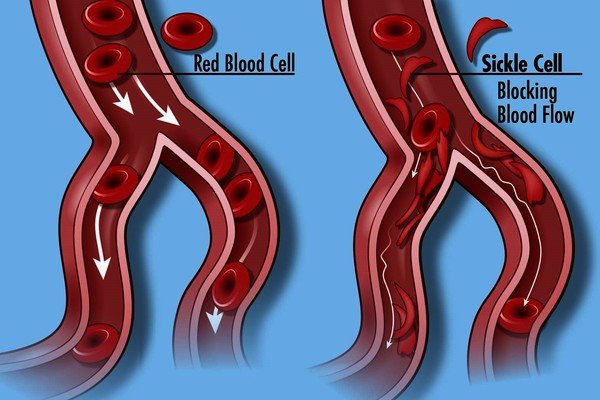
Sick of Cell: Understanding the Impact of Sickle Cell Disease and the Quest for a Cure best 2024
Sick of Cell: Understanding the Impact of Sickle Cell Disease and the Quest for a Cure
Sickle cell disease sick of cell is one of the most common genetic blood disorders worldwide, yet it remains significantly misunderstood and underrepresented in public health discussions. The disease, which primarily affects individuals of African, Mediterranean, Middle Eastern, and Indian ancestry, has profound implications on the lives of those diagnosed and their families. This article delves into the origins, impacts, and the ongoing quest to cure sickle cell disease, reflecting the growing sentiment of being “sick of cell”—a phrase that captures the frustration and urgency felt by those affected by this condition.
Table of Contents
ToggleThe Origins of Sickle Cell Disease
Sickle cell disease is a group of inherited red blood cell disorders. People with SCD have atypical hemoglobin molecules called hemoglobin S, which can distort red blood cells into a sickle or crescent shape. These sickle-shaped cells are rigid and sticky, causing them to clump together and block blood flow in blood vessels. This blockage can result in severe pain, known as sickle cell crises, and can also cause complications such as stroke, organ damage, and a shortened life span.
The genetic mutation that causes sickle cell disease is believed to have originated thousands of years ago in regions where malaria was prevalent. In a twist of evolutionary irony, carrying just one sickle cell gene (sickle cell trait) provides some protection against malaria, a deadly disease spread by mosquitoes. However, inheriting two copies of the gene leads to sickle cell disease, a condition far more debilitating.
The Global Impact of Sickle Cell Disease
sick of cell disease is a global health issue, with approximately 300,000 babies born with the condition each year. The highest prevalence of SCD is found in sub-Saharan Africa, where it is a leading cause of childhood mortality. In some African countries, up to 2% of all children are born with SCD, and without proper medical care, many do not survive past childhood.
In the United States, SCD affects around 100,000 individuals, predominantly African Americans. However, due to improved medical care and increased awareness, the life expectancy for those with SCD in developed countries has risen dramatically over the past few decades. While this is a positive development, individuals with SCD still face a lifetime of health challenges, including frequent hospitalizations, chronic pain, and a higher risk of infection.
The burden of SCD is not limited to physical health. The economic impact of the disease is significant, both for affected families and healthcare systems. In the U.S., the annual cost of treating SCD-related complications is estimated to be in the billions of dollars. This figure does not account for the lost productivity and income experienced by patients and their families, who often face financial hardship due to the disease.
Living with Sickle Cell Disease: A Daily Struggle
Living with sickle cell disease is an ongoing battle. Individuals with SCD must navigate a complex web of physical, emotional, and social challenges. The unpredictable nature of sickle cell crises, which can occur without warning and last for days or even weeks, makes it difficult for patients to lead normal lives. These painful episodes often require hospitalization and can be so severe that they incapacitate the patient.
In addition to managing pain, individuals with SCD are at risk for a range of complications, including acute chest syndrome (a life-threatening lung condition), stroke, and organ damage. Chronic anemia, resulting from the rapid breakdown of sickle cells, can lead to fatigue, delayed growth and development in children, and increased susceptibility to infections.
The psychological toll of living with a chronic, life-threatening disease cannot be overstated. Many individuals with SCD experience depression, anxiety, and feelings of isolation due to the constant challenges they face. The stigma associated with the disease, particularly in regions where it is poorly understood, can further exacerbate these mental health issues.
The Quest for a Cure: Advances in Treatment and Research
For decades, treatment options for sick of cell disease were limited to managing symptoms and preventing complications. Pain relief, blood transfusions, and antibiotics were the mainstays of treatment. While these interventions have improved the quality of life for many patients, they do not address the root cause of the disease.
The only curative treatment currently available for SCD is a bone marrow or stem cell transplant. However, this procedure is risky and requires a compatible donor, which is not an option for many patients. Even when a suitable donor is found, the transplant process carries significant risks, including graft-versus-host disease, where the donor cells attack the patient’s body.
In recent years, there has been a surge of interest and investment in developing new therapies for sick of cell disease. One of the most promising avenues of research involves gene therapy, which aims to correct or replace the defective gene responsible for producing sickle hemoglobin. Early clinical trials have shown encouraging results, with some patients achieving a complete reversal of the disease. However, these therapies are still in the experimental stages and are not yet widely available.
Another area of research focuses on the development of drugs that can prevent the sickling of red blood cells. Hydroxyurea, a medication that increases the production of fetal hemoglobin (a type of hemoglobin that does not sickle), has been used for decades to reduce the frequency of sickle cell crises. More recently, drugs like voxelotor, which increases hemoglobin’s affinity for oxygen, and crizanlizumab, which reduces the adhesion of sickle cells to blood vessels, have been approved for use in treating SCD.
While these advances offer hope, they also highlight the disparities in healthcare access that exist for individuals with SCD. New treatments are often expensive and may not be available in low-resource settings, where the majority of individuals with SCD live. This inequity underscores the need for a global approach to sickle cell disease, one that ensures all patients, regardless of where they live, have access to the care they need.
Advocacy and Awareness: Changing the Narrative
The phrase “sick of cell” resonates deeply with those affected by sickle cell disease. It reflects not only the physical and emotional toll of living with the disease but also the frustration with the lack of attention and resources devoted to its treatment and cure. Despite being one of the most common genetic disorders in the world, SCD has historically received less research funding and public awareness than other diseases with similar or even lower prevalence.
In recent years, there has been a growing movement to change this narrative. Advocacy organizations, healthcare providers, and patients themselves are working to raise awareness about SCD and push for greater investment in research and treatment. Sickle Cell Awareness Month, observed every September, is one such effort to bring attention to the disease and the needs of those affected by it.
Education is a critical component of this advocacy work. Increasing public understanding of SCD can help reduce stigma and improve the quality of life for patients. It can also lead to earlier diagnosis and intervention, which are key to preventing complications and improving outcomes. For example, newborn screening for SCD is now routine in many countries, allowing for early treatment and better management of the disease from infancy.
The Future of Sickle Cell Disease: Hope on the Horizon
The future of sickle cell disease is filled with both challenges and hope. While there is still much work to be done, the advances in research and treatment over the past few years have brought us closer than ever to finding a cure. The growing awareness of the disease and the voices of those affected are helping to drive this progress.
However, achieving the ultimate goal of a cure for all individuals with SCD will require a concerted effort from governments, healthcare providers, researchers, and communities. It will also require addressing the social and economic disparities that continue to limit access to care for many patients.
As we look to the future, it is essential to remember the human side of sickle cell disease—the individuals and families who live with its impact every day. Their stories and their resilience are at the heart of the fight against SCD. By supporting them and investing in the research and resources needed to combat this disease, we can move closer to a world where no one has to suffer from sickle cell disease.
In the meantime, those affected by SCD continue to fight, hoping for a future where they are no longer “sick of cell,” but instead, free from its burden entirely.
Mirza
Related Posts

VP Shunt: An Overview of the best information 2024 Ventriculoperitoneal Shunt Surgery and Its Applications

Nicotine in Nicotine Gum best information 2024: A Comprehensive Overview
